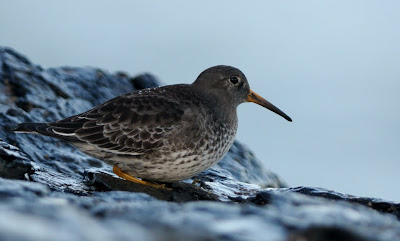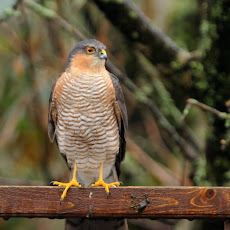I have photographed this species before and as the local birders will know they overwinter year on year in Mounts Bay and their principle roost is close to Battery Rocks and the swimming pool and they feed on the small beach.
The Purple Sandpiper Breeds in the high arctic tundra with one or two breeding pairs in Scotland and are classed as amber status, in other words under threat, the site is kept secret to deter egg thieves. The location of their overwintering area in Penzance is the area that the Isles of Scilly steam ship company along with the local authority want to reclaim from the sea, back filling the area and creating a new docking and loading area for the Scillonian. I also saw within 50 metres from the shore a Red Breasted Merganser, one Razorbill,numerous Turnstones on the shore, feeding shags, Oyster Catchers and Curlew. All within one hour. The question is do we destroy important habitat for commerce, or should they look for an alternative site preserving this historic area and habitat for a species under threat.














































